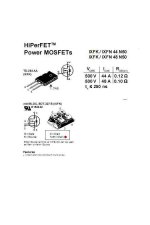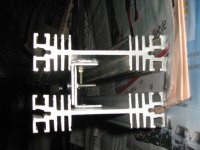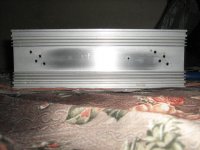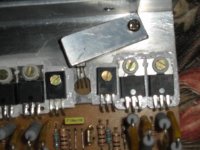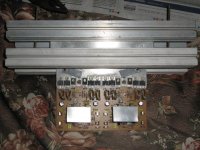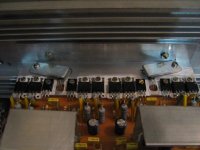Nice Job Alex, thats a very nice looking PCB. Looks like you will have to isolate the FETs though. What rails do you intend to run?
Cheers
Q
Cheers
Q
Carl_Huff said:By the way, these are in stock at Digikey and cost $30 apiece.
Holy guacamole batman!
 That's pretty tough to justify. You gotta admit though, it looks pretty robust.
That's pretty tough to justify. You gotta admit though, it looks pretty robust...Todd
Protection and QUASI NMOS with IXFN 48N50
Hi ,
ravirat4u short circuit protection is not missing , the second two from left + RE - are used in this purpose 😉
QUASI Thanks for the nice words , voltage rail at +/- 60 V
Once again I made some mesurements ,and interesting but TAB from power mosfets is not connected to D like in data sheet
All the best Alex mm
Hi ,
ravirat4u short circuit protection is not missing , the second two from left + RE - are used in this purpose 😉
QUASI Thanks for the nice words , voltage rail at +/- 60 V
Once again I made some mesurements ,and interesting but TAB from power mosfets is not connected to D like in data sheet

All the best Alex mm
imi pare rau alex mm 
Your pcb is very flexible it can be used for stereo or mono amps too.
I preferred it for later (in stereo if one channel amp failed other one can be useful)
I made some mesurements ,and interesting but TAB from power mosfets is not connected to D like in data sheet
strange!
ravi
🙂

Your pcb is very flexible it can be used for stereo or mono amps too.
I preferred it for later (in stereo if one channel amp failed other one can be useful)
I made some mesurements ,and interesting but TAB from power mosfets is not connected to D like in data sheet
strange!
ravi
🙂
alex mm said:TAB from power mosfets is not connected to D like in data sheet
Very strange indeed, each IXYS power Mosfet i have needs to be insulated.
(the Mouser price is ~$36 for 1, overhere the 48N50 does $50-$55)
Hi Vivek,
that aluminium angle between the outputs and the heatsink looks quite thin in the pics.
Check you device operating temperatures when you get it running.
that aluminium angle between the outputs and the heatsink looks quite thin in the pics.
Check you device operating temperatures when you get it running.
I would use 6mm thick angle, you may get by with 4mm.
2mm sounds very thin and will have significant thermal resistance.
2mm sounds very thin and will have significant thermal resistance.
Hi Vivek,
AndrewT is absolutely right, I prefer (and other DIYers too) ~5mm thin alu angle. That has enough low thermal res and easy to find in most countries - for reasonably price.
AndrewT is absolutely right, I prefer (and other DIYers too) ~5mm thin alu angle. That has enough low thermal res and easy to find in most countries - for reasonably price.
AndrewT said:Check you device operating temperatures when you get it running.
no.Vivek said:That means I have to dismantle the whole thing and do it all over again.
Check quiescent and running temperatures of the devices, the angle and the sink.
Note that if there is significant difference in temperature, that is telling you there is significant thermal resistance.
I would suggest that the devices must be less than 10Cdegrees above the sink temperature, preferably <5Cdegrees difference.
Nmos200
Finally i made it😀
Sounds very clear and warm.Uses +-40v rails for now.
Quasi thank you for this project.Respect😉
Finally i made it😀
Sounds very clear and warm.Uses +-40v rails for now.
Quasi thank you for this project.Respect😉
anything that allows sensible readings to be taken.Vivek said:Thanks Andrew. What kind of a thermometer should I use?
Even your finger is quite a good guide although estimating the 5 or 10degree difference will probably take quite a bit of experience.
- Home
- Amplifiers
- Solid State
- Power amp under development


